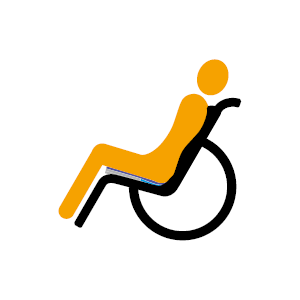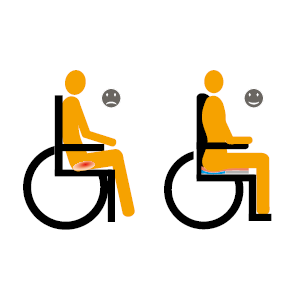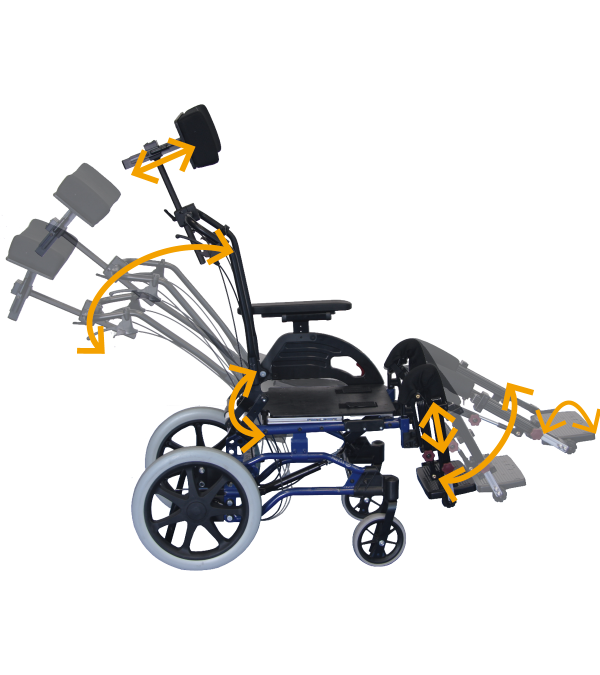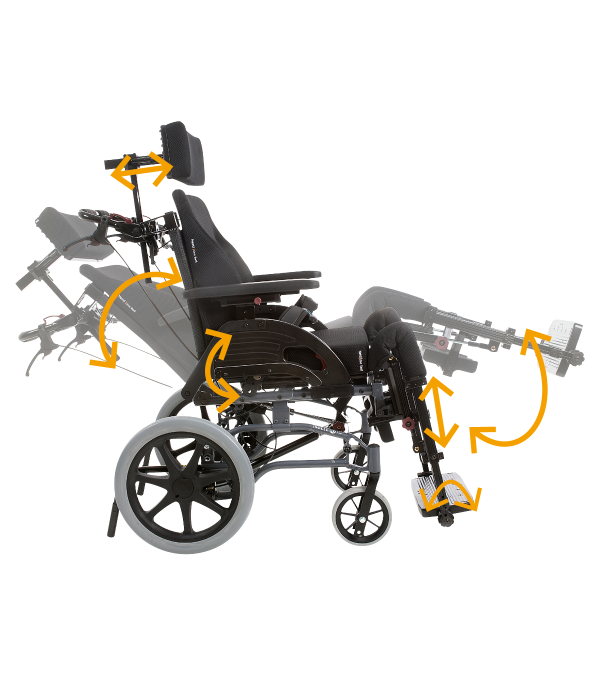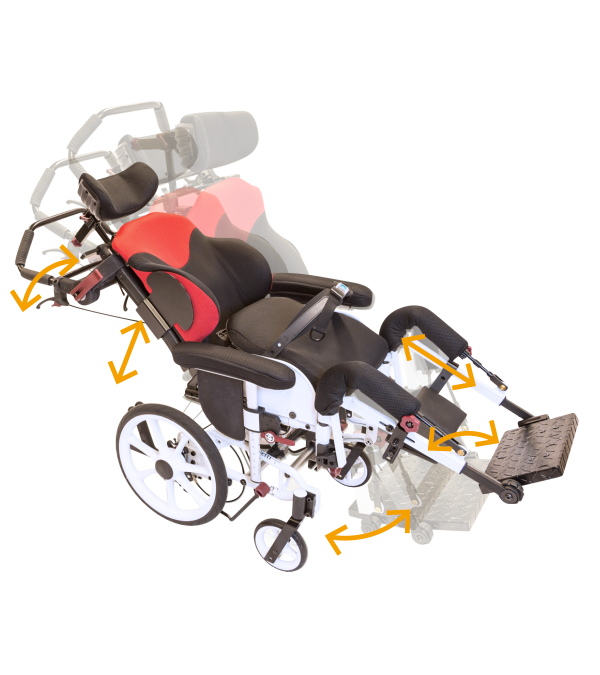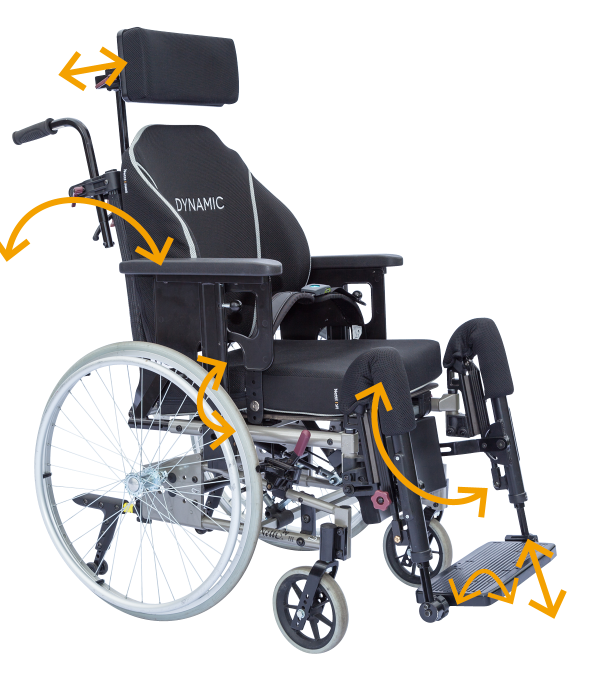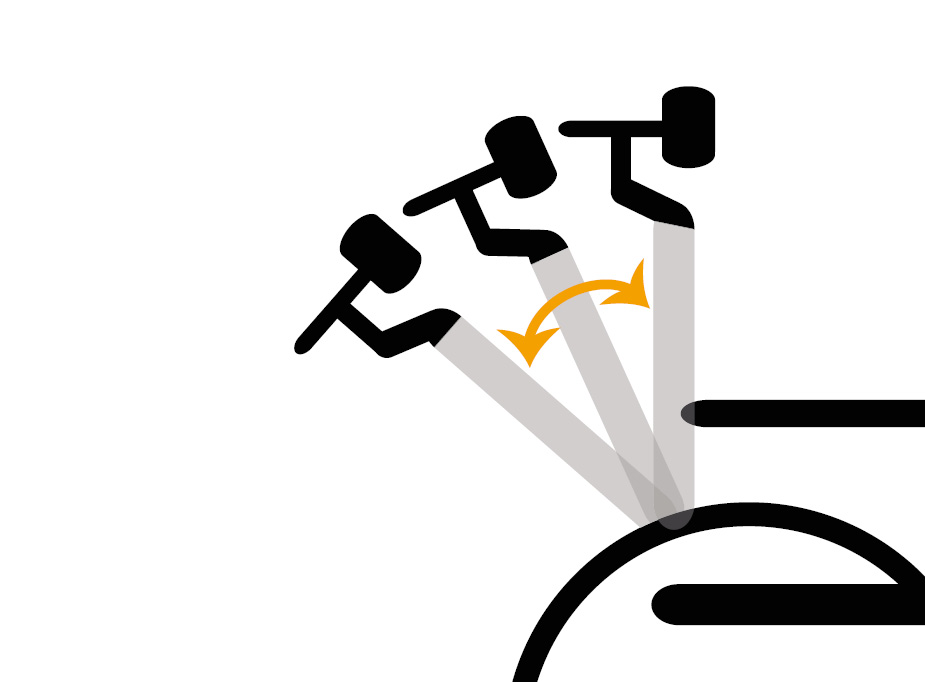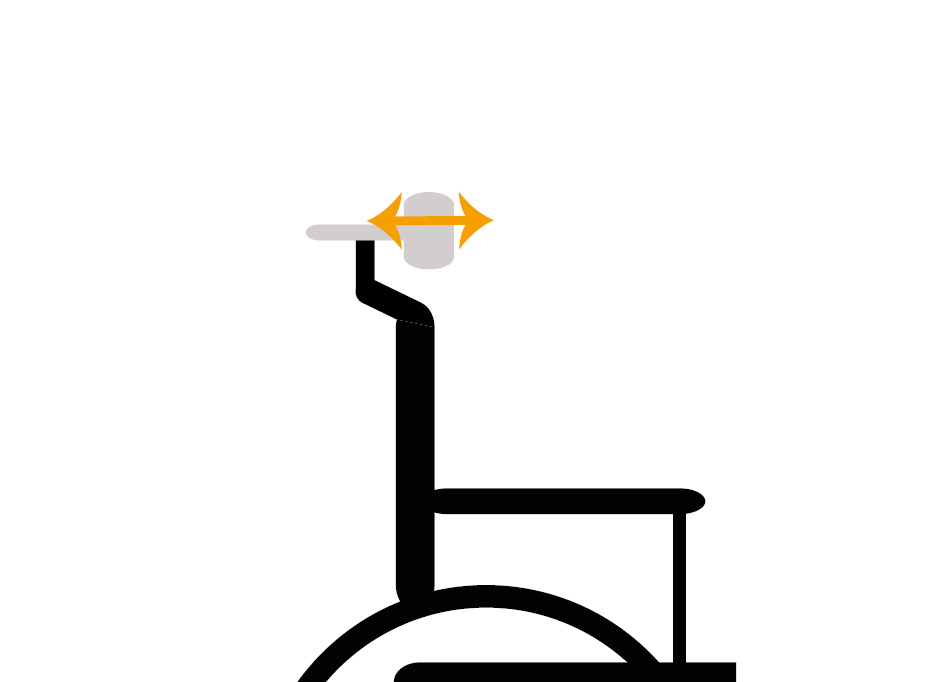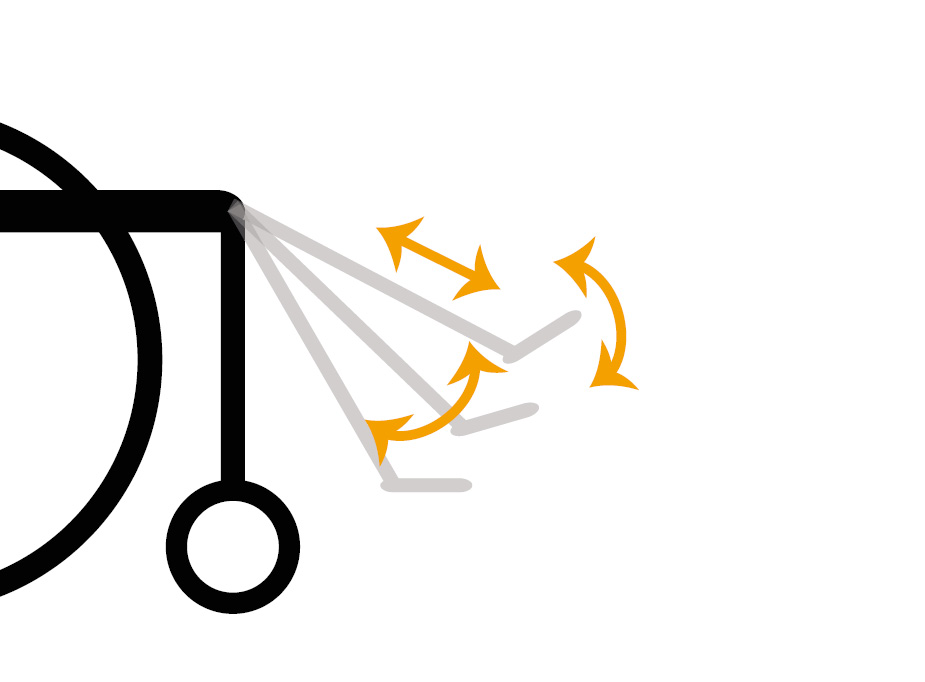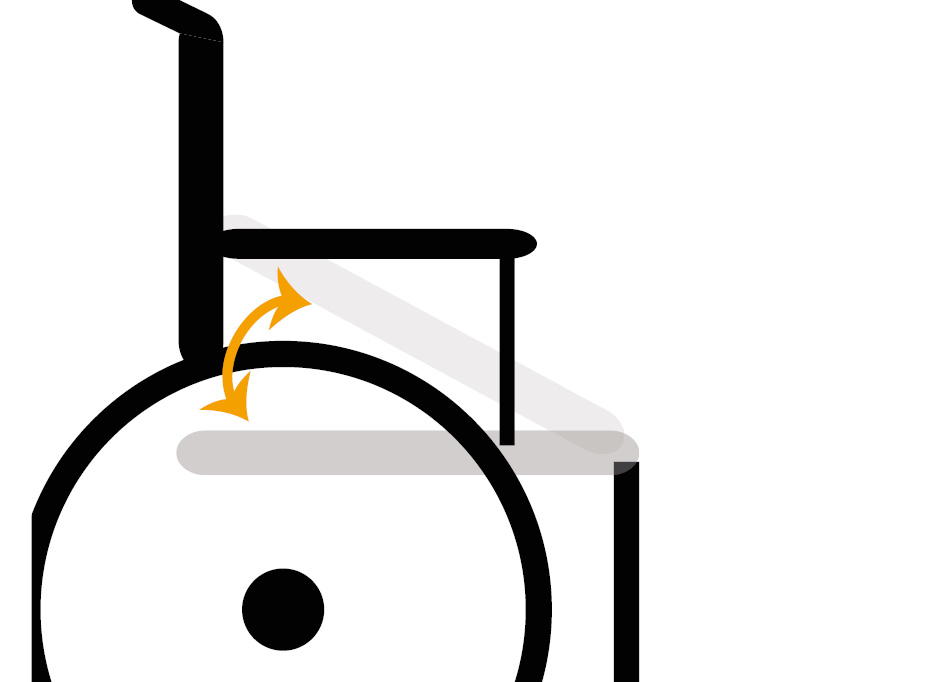Allowing movement
We at Netti always seek to improve the user’s ability to take part in everyday life activities. One of our main goals is to adapt the wheelchair to the user. We allow the wheelchair to move with the user instead of locking the wheelchair into a static situation where the user resists against. In this way the dynamic wheelchair will most likely make it possible for the user to experience being able to sit upright in an active position for a longer period, have less discomfort and avoid breakage of the wheelchair.
This will give the user the opportunity to take part in conversations and join friends and family during everyday situations like dinner.
Over time we have seen a reduction in unwilling movements and agitations. Vestibular abilities like balance will also improve if challenges and stimulation are needed, and thereby support the ability for independent living.
Distributing forces
The uncontrolled movement and the strength of the movement is better guided with dynamic sitting components compared to static components. The user will have less discomfort during spasms as the wheelchair supports the movement. Over time we have seen reduction in unwilling movements, spasms and agitations in our case studies.
Preventing injury
The purpose of a wheelchair is to supply the user with a supporting, stabilizing and safe aid.
When allowing the chair to move with the user, you will reduce the possibility for the user to hurt himself during a spasm since the forces are divided.
The chair will support the user and hence reduce the possibility for abrasions, muscle injuries and injuries caused by damaged parts on the chair. Over time you might also be able to see a reduction in unwilling movements and agitations.
Improving postural control
To improve the postural control and reduce the number of repositioning is always a goal in a wheelchair adaptation.
One of the biggest challenges for wheelchair users is sliding and shearing as this together with other factors like microclimate and pressure distribution will increase the overall risk of pressure ulcer development.
The Netti Dynamic System will accommodate the user’s extension movements letting the wheelchair work in synergy with the user’s movements. After a spasm the user will return to the original seating position thus preventing sliding and thereby securing a good and upright seating position and optimum pressure distribution throughout the day.
Enabling independence
When the chair allows the user to move, he will have less discomfort during spasms.
Most likely this will result in a relaxed and optimal sitting position and enable the user to sit upright and participate longer in activities of everyday life. Physiological functions like breathing, food and fluid intake and digestion will also improve.
A psychological important factor is that the user can express its feelings via movements in a dynamic system. Remember that this group of patients has reduced and limited motoric control and often reduced verbal skills. Being able to use movements as a way to express itself is a very important factor.



